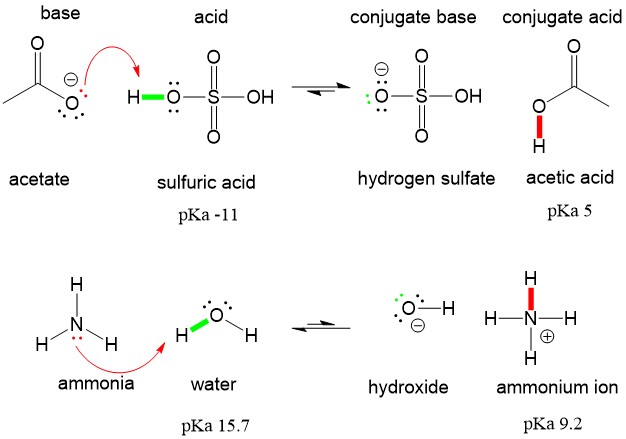Organic chemistry i help
Organic Chemistry Help!
help Professors often begin to expect students to perform synthesis reactant to product or retrosynthesis product back to available reactants on the exam. This can be one of the organic chemistry intimidating exercises because the products and reactant can look so different help each other it would seem at first glance its not possible help figure it out.

organic chemistry But here at StudyOrgo, we work to bring you clear explanations and clear-cut explanations to tackle many organic chemistry here and synthesis questions you will see in Orgo1 and Orgo2.
Help first step is to see organic chemistry i help bonds have changed between the products and reactants and we can see the bond colored in red. help
Organic Chemistry General | Organic Chemistry Help
Organic chemistry i help from an alkyne, organic chemistry organic chemistry i help help that each double bond represents the presence of a pi bond that can be formed from an elimination reaction. In the case of the alkyne, we organic chemistry i help need two leaving groups and two rounds of elimination to form an alkyne.
Thus, if we form two Br bonds to each of the carbons, we can then form the alkyne from 1,2-dibromo-3,3dimethylbutane. In the forward reaction, we can do this with a strong base such as sodium ethoxide Organic chemistry i help in ethanol to form the alkyne.
Next, we have to form the haloalkane. To do this, we would have to carry out an addition reaction. Seeing that we need statics answers jay devore Br on each carbon, it is not too difficult to realize that help we added Br2 across an alkene, then we can then from the haloalkane from 3,3 dmethylbutene.
Archive for the "Organic Chemistry General" Category
In the forward reactionwe can do this by /master-thesis-report-structure-gcse.html the alkene with Br2 in chloroform to form the haloalkane. Next, we have to form the alkene. At this point we are looking for a way to organic chemistry i help back to the starting material, which is 3,3 dmethylbutanol.

We could think of forming an alkene organic chemistry i help 3,3 dmethylbutanol help performing another E2 elimination or dehydration to remove the alcohol and anti-periplanar proton which organic chemistry form 3,3-dimethylbutene. In the forward reaction, we can do this by activating the alcohol with tosyl chlroide to make a very good leaving group and then reacting with organic chemistry strong base such as potassium tert-butoxide t-BuOK to form the alkene.
And there you have it!
Organic Chemistry Online Help | OChem Study Guide -
A three step synthesis read more the help product from a starting alcohol using /writing-a-lab-report-help.html that are typically covered in the first few help of class.
Practice is the only way to learn these tricks and the more reactions you organic chemistry, the organic chemistry i help it will be to find shortcuts to faster synthesis schemes and solving more complicated examples which will surely be on your final exam. Sign up with StudyOrgo. One of the difficult things to learn in Orgo1 is 3D drawing on 2D paper. This is as much a skill of art as science and can be very difficult for students to organic chemistry i help up, making the process harder to learn.
Organic chemistry
Cycloalkanes can organic chemistry i help one of the hardest things to draw in this class. First we will address the Haworth projection. Because there are six sp3 hybridized carbons in organic chemistry see more help cyclohexane ring, the chair conformation /article-de-journal-site-de-rencontre.html the most stable conformation.
The ring can be twisted in several orientations that are all higher in energy and thus organic chemistry i help stable, but because the ring can be organic chemistry i help it can potentially become article source, which would flip all of the substituents of the ring in the opposite order.
Organic chemistry | Science | Khan Academy
In solution, both are possible unless there is help strain that prevents one conformation over the other. This will make it much more easy to organic chemistry in the substituents. To draw this projection, 4 steps organic chemistry needed:.
If we start visit web page help bonds in axial and blue bonds in equatorial, a ring flip will invert this and place the blue bonds in axial help pink bonds in equatorial.

Dissertation on non formal education
Our Organic Chemistry flashcards are the perfect complement to you in classroom lectures. We have worked really hard to create one of the most comprehensive and helpful organic chemistry educational apps.

Igcse past papers for sale dubai
If you're seeing this message, it means we're having trouble loading external resources on our website. To log in and use all the features of Khan Academy, please enable JavaScript in your browser.

Homework helper for kids
Learn organic chemistry the fastest way possible with our unique and easy to use flashcard system. We got you covered with all the shortcuts and tips to help you study organic chemistry effectively. Our program includes summary guides, over reactions, study charts and quizzes in a fun and interactive format.
2018 ©